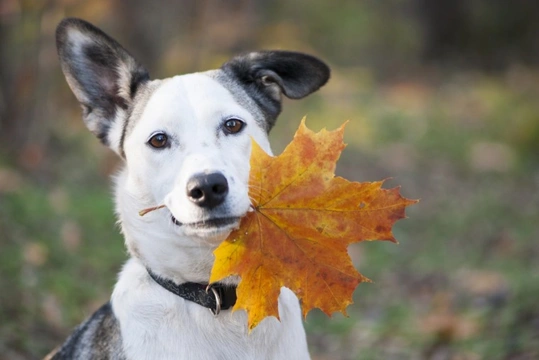
Five autumn dog care myths and the truth behind them
The slightly cooler days of autumn often come as something of a relief to dog owners after the long hot days of summer, particularly if you struggle with the heat or if your dog is a brachycephalic breed like the English bulldog, which often find hot weather challenging.
Autumn can make life easier for dog owners in many ways, as you don’t have to plan walks and exercise around the cooler hours of the day, but neither is the weather so cold as to mean that you need to think about coats or booties to keep your dog warm either.
However, like each of the four seasons of the year, autumn comes with its own dog care considerations and factors to account for in terms of how you look after and manage your dog. As is the case with most things relating to dog ownership and dog advice, everyone has their own opinions on the pros and cons of autumn for dog owners, and things you need to think about in the autumn season.
Finding out what advice is sound and being able to tell it apart from old wives tales and myths isn’t always simple when it comes to dog care, and if you’re trying to find out if there’s anything special to think about during the autumn, you’ve probably already come across a range of conflicting advice.
With this in mind, this article will share five common autumn dog care myths that tend to do the rounds every year, and the real truth behind them. Read on to learn five common misconceptions about dog care in autumn.
1. Autumn heralds the end of seasonal allergens for dogs
If your dog suffers from allergies, depending on what they’re allergic to, spring and summer are usually the worst times of the year for allergy flare ups – particularly when it comes to things like hayfever and pollen allergies.
However, many dogs are sensitive to several allergenic triggers rather than just one, and it is not only things like pollen and plants that can cause allergic reactions in dogs. Towards the autumn, many plants spread seeds, pollen and spores before going into their winter dieback, and this can result in an uptick in allergy symptoms for some dogs during the autumn months.
Also, harvest mites tend to be prolific around autumn too, and these can cause localised contact irritations in some dogs that come into contact with them.
2. Autumn also means no more ticks around
Some areas of the country are particularly heavy with ticks, and most dog owners know about locations in their area where ticks tend to be prolific, and so best avoided. Ticks are fairly seasonal in terms of when they are more active and most likely to latch on to your dog, and tick season in the UK runs from around early spring to early summer, but ticks also become more active again from around August to November, making them a seasonal autumn risk too.
Ticks may be more common at certain times of the year but they are still active to a degree at other times, so continue to check your dog over for ticks after walks year-round.
3. You can suspend your dog’s flea treatments to save money during cooler weather
Flea treatments for dogs can be expensive, and many dog owners believe that fleas become dormant in cold weather and so, aren’t a threat to dogs in autumn and winter.
This means that some people stop using preventative flea treatments on their dogs from autumn onwards, but this is not a good idea. Fleas can become dormant in the cold, but as we heat our homes (and dogs are obviously warm too), they don’t take a break when the weather cools off, and can and do still infest dogs all year round.
Don’t skip your dog’s autumn flea treatment doses, unless you want to risk spending the winter dealing with flea bites!
4. Your dog will stop shedding as they grow in their thicker winter coat
Whether your dog has a huge, thick and shaggy coat or a finer, single layered one, as winter approaches, their coat will grow in denser and heavier to help to keep them warm in the coming cold weather.
We’re all familiar with our dogs shedding more heavily in spring when the weather is warming up, but dogs also tend to shed heavily in autumn too, losing the last of their summer coats and preparing for their new winter look.
This means that you should brush and groom your dog more regularly in autumn when they start shedding, and keep on top of shed hair in the home too.
5. It’s not cold enough to need to think about keeping your dog warm in the house yet
One of the nice things about autumn is that the weather becomes a little more comfortable, but has yet to become really cold. We tend to start to notice a bit of a nip in the air when autumn sets in, but an extra jumper or duvet at night is generally enough to keep us comfortable until winter really begins in earnest.
When you head off to bed in the evening to snuggle up under your duvet, don’t forget that your dog might be cold overnight when the temperature drops, and that they may need an extra blanket too, or the heating to be put on a low setting in the room that they sleep in. This is particularly important for dogs that feel the cold a lot, or that have particularly short or fine coats.



